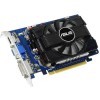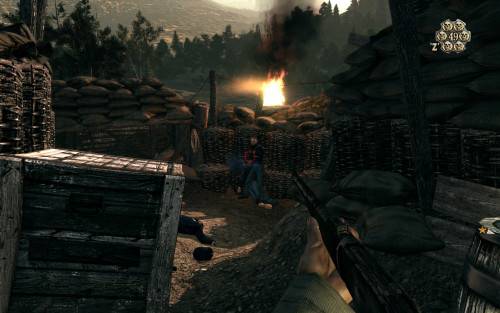- Qualcomm Launches Snapdragon 4 Gen 2 Mobile Platform
- AMD Launches Ryzen PRO 7000 Series Mobile & Desktop Platform
- Intel Launches Sleek Single-Slot Arc Pro A60 Workstation Graphics Card
- NVIDIA Announces Latest Ada Lovelace Additions: GeForce RTX 4060 Ti & RTX 4060
- Maxon Redshift With AMD Radeon GPU Rendering Support Now Available
ASUS GeForce 210, GT 220 & GT 240

This past fall, NVIDIA filled out the remainder of its GT200 series of graphics cards with three models. For basic computing, there’s the $40 GeForce 210, while for those looking to get a bit of light gaming done, there’s the $60 GT 220. And to round things off, there’s the $90 GT 240, which handles all of today’s games rather well at 1080p.
Page 4 – Call of Juarez: Bound in Blood
When the original Call of Juarez was released, it brought forth something unique… a western-styled first-person shooter. That’s simply not something we see too often, so for fans of the genre, its release was a real treat. Although it didn’t really offer the best gameplay we’ve seen from a recent FPS title, its storyline and unique style made it well-worth testing.
After we retired the original title from our suite, we anxiously awaited for the sequel, Bound in Blood, in hopes that the series could be re-introduced into our testing once again. Thankfully, it could, thanks in part to its fantastic graphics, which are based around the Chrome Engine 4, and improved gameplay of the original. It was also well-received by game reviewers, which is always a good sign.
Manual Run-through: The level chosen here is Chapter I, and our starting point is about 15 minutes into the mission, where we stand atop a hill that overlooks a large river. We make our way across the hill and ultimately through a large trench, and we stop our benchmarking run shortly after we blow up a gas-filled barrel.

Once again, the GT 220 shows that it’s about 2x as fast as the 210, which is quite the feat given it costs just 50% more. Intel’s IGP, as mentioned in our launch article, can’t render Bound in Blood properly, so it’s of no competition.


The FPS difference between the HD 5670 and GT 240 in Modern Warfare 2 was obvious, but the GT 240 falls even further behind here. This isn’t much of a surprise, however, as Bound in Blood as always seemed to be tuned more towards ATI cards.
|
Graphics Card
|
Best Playable
|
Min FPS
|
Avg. FPS
|
|
ATI HD 5870 1GB (Reference)
|
2560×1600 – Max Detail
|
58
|
81.945
|
|
NVIDIA GTX 295 1792MB (Reference)
|
2560×1600 – Max Detail
|
37
|
80.339
|
|
ATI HD 5850 1GB (ASUS)
|
2560×1600 – Max Detail
|
51
|
69.165
|
|
NVIDIA GTX 285 1GB (EVGA)
|
2560×1600 – Max Detail
|
45
|
54.428
|
|
NVIDIA GTX 275 896MB (Reference)
|
2560×1600 – Max Detail
|
41
|
51.393
|
|
ATI HD 5770 1GB (Reference)
|
2560×1600 – Max Detail
|
28
|
45.028
|
|
NVIDIA GTX 260 896MB (XFX)
|
2560×1600 – Max Detail
|
35
|
44.023
|
|
ATI HD 5750 1GB (Sapphire)
|
2560×1600 – Max Detail
|
27
|
38.686
|
|
NVIDIA GTX 250 1GB (EVGA)
|
2560×1600 – Max Detail
|
25
|
33.751
|
|
ATI HD 5670 512MB (Reference)
|
1920×1080 – Max Detail
|
38
|
47.23
|
|
NVIDIA GT 240 512MB (ASUS)
|
1920×1080 – Max Detail, 0xAA
|
29
|
39.446
|
|
NVIDIA GT 220 1GB (ASUS)
|
1280×1024 – Medium Detail, 0xAA
|
29
|
41.722
|
|
NVIDIA 210 512MB (ASUS)
|
1280×1024 – Low Detail, 0xAA
|
18
|
30.825
|
Both the GT 220 and GT 240 managed to keep their respective top settings, while the 210 had to see the game’s detail lowered in order to gain ultimate playability. I should note that with low detail settings, this game is really ugly, so the GT 220 is the preferred minimum card here.
Support our efforts! With ad revenue at an all-time low for written websites, we're relying more than ever on reader support to help us continue putting so much effort into this type of content. You can support us by becoming a Patron, or by using our Amazon shopping affiliate links listed through our articles. Thanks for your support!






